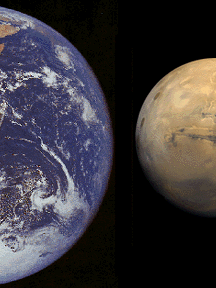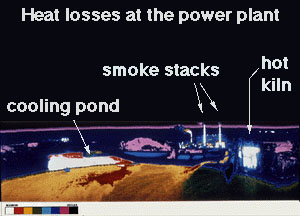Exploratour - Evolution of the Solar System

NASA
The Earth and Mars are examples of contiguous planets which did and did not differentiate early in their histories. The Earth has a well formed core, with a mantle of silicate rock and an outer crust. Earth has a magnetosphere, which is something which is generated in an active iron core. Mars, the "red planet" seems to have a lot of iron on the surface, a weak magnetosphere, and a small iron core. This suggests that Mars is weakly differentiated. The lack of differentiation may say something about how warm these planets were upon formation. Mars may have warmed too late in its history to fully differentiate, or Mars may not have as much of the radioactive material which keeps the Earth warm to start with. The lack of warmth would have affected the history of Mars, particularly its ability to generate volcanic activity.
This is page 22 of 60











